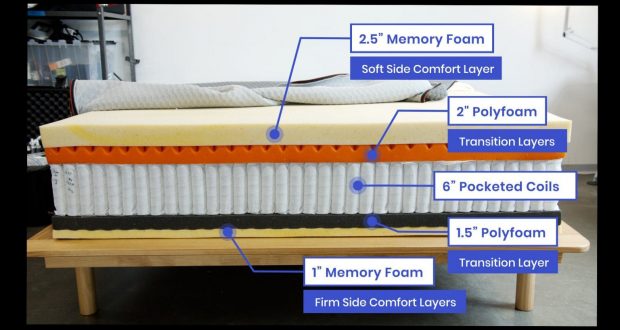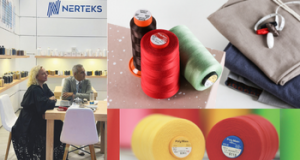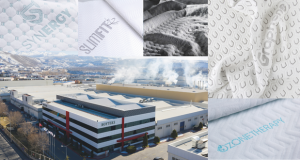* While most mattresses look the same from outside, the difference is in the details of the layers inside. Components of a mattress make a lot of sense!
When you go out to buy a mattress, you most likely pay attention to two main qualities – comfort and support. And that makes sense since you spend more than seven hours a day on your bed, which will be used for ten years or more until you replace with a new one. But have you ever thought about what exactly is inside a mattress – or what contributes to the comfort and support?
We, the users, see only a fancy fabric covered excellent structure to lay on and we tend to think of a mattress as one solid thing. While most mattresses look the same from the outside, the difference is in the details of the layers inside. What your mattress is made of is what is going to make the difference between a terrible night’s sleep and a great night’s sleep. But the reality is that they are made up of a variety of mattress components. When investing in years of quality sleep, it’s important to know what’s inside the mattress you’re buying. Essentially a mattress contains three functional components: the support component, the comfort component and the base. Each component can be made of one or more materials, and occasionally there are mattresses where the same material is used for both support and comfort, latex or viscoelastic.
They may be built and colored differently, but they are inspired by the exact mechanisms and structured with the same materials. And the quality of each one of those mattress components has an impact on the bedding and on the way you sleep at night. For this reason, your choice of components should be made based on how you feel when you lie on the mattress, how long you want the mattress to last, whether you are disturbed by your partner’s movements at night, and whether you have any special needs (e.g. pressure and pain relief).
To help you identify the best mattress possible, we have put together a quick guide to the most important mattress components.
MATTRESS SUPPORT COMPONENTS:
As the name suggests, this mattress layer consists of materials that provide adequate support for the body. The support layer helps the comfort layers provide adequate cradling to relieve pressure on specific body parts. It also stabilizes the mattress and determines how much your body sinks into the mattress. It’s made out of several types of designs, materials, and construction – all of which makes the mattress more or less supportive and may provide benefits like less motion transfer, stronger edge support and better airflow. These are mainly items such as pocket coils, continuous or innerspring; latex foam and visco-elastic/memory foam materials are used, either singularly or in combination, to provide support and to promote neutral spinal alignment,
MATTRESS COMFORT COMPONENTS:
This is the fiber or foam layer that’s added on top of the support system to offer the softness and comfort of the mattress. Manufacturers use different amounts, densities, and shapes of padding materials, usually polyfoam, latex, gel, cotton, polyester, cashmere, and wool, to attain different softness levels. Pillow top models are the softest and have more padding layers on the top, whereas firm models only have a few layers.
Each component can be made of one or several materials, and occasionally there are mattresses where the same material is used for both support and comfort, latex or viscoelastic. During manufacturing process, all mattresses have the following internal parts: foam, batting, wool, cotton, adhesives, steel coils, mattress base, and flame retardants.
Ticking and Quilting
The actual exterior of your mattress is covered in a layer usually made up of cotton or a cotton-polyester blend. This is the part of your mattress you actually cover up with your bed sheet. In fact, it is one of the most important mattress components. A mattress with quality ticking and stitching will typically last longer before it needs replacement. More importantly, these fabrics show the level of quality in most cases because they may have extra innovative features such as being cool, softer, breathing, etc. Turkey has the major share in global mattress ticking fabric market. There are some world-famous brands in Turkey such as Boyteks, Bekaert Desleee, etc.
Padding
From top to the springs’ level, all through it structure, your mattress contains several layers of padding. The top layer is right below where you sleep and has a big share on how comfortable the mattress feels overall. Beneath that is another layer of padding that affects how much support the mattress gives the pressure points in your body. Finally, beneath that is another layer of padding that protects your body from the springs. In most cases, all three layers are made of a combination of cotton and foam.
Springs and Coils
Under the padding is a bed of springs that provide the support for the mattress. The quality of those springs is important. In general, springs that are made from a thicker wire will be firmer and provide more support. The number of springs is also important for the firmness of the mattress. You will need to test out different innerspring mattresses to find the spring configuration your body and sleep system requires most.
Foam
Various materials could make up a thick slab of foam. It is found within a mattress and is one of its main components. Moreover, some foams are designed and equipped with temperature regulation technology that keeps your body warm. They also come in several types which depend on your preference: memory foam, gel memory foam, polyurethane foam, and others. Mattresses that do not contain springs typically use foam in their support layer. There are pros and cons to selecting this type of mattress, so it’s important to carefully evaluate this option and the alternatives before making a final decision. Look for a foam mattress that is comfortable but supportive, and that helps keep you cool while you sleep.
Firmness and Thickness
The components of a mattress contribute to its firmness or feel. Firmness is measured on a scale of 1 through 10, with 1 being the softest and 10 being the firmest, but most mattresses fall between 3 (soft) and 8 (firm). The most common firmness levels are medium (5) and medium firm (6) because they provide a balance of contouring and support that caters to sleepers of average weight (130 to 230 pounds).
Many people have firmness preferences that differ from those of their sleep partners. A mattress with dual firmness – or a different feel on the left- and right-hand sides – can be a useful option for these couples.
The thickness, or profile, of a mattress also depends on its layers. Most mattresses made today measure between 10 and 15 inches thick, but shorter and taller options are also available.
BASE
Mattresses aren’t complete without the very pinnacle of their support which is their base. These mattresses can’t stand upright without it. So, rounding out the list of mattress components is the mattress foundation, often called the box springs. Some contemporary mattresses don’t have a foundation, but these are not common. Usually, the foundation is made of either wood or springs. Springs will give the bed a plusher feel while wood will provide more support. If you decide to go with wood, make sure the material is free of cracks and constructed straight. A flat slat base would be ideal for your new mattress, with slats no more than 6cms apart. The correct base will ensure the performance and integrity of your mattress is not compromised, and protects your warranty. There are a wide range of bases in micro-suede and linen look to choose from, with or without drawers, at reasonable prices in the market.
 SleepTech Magazine Mattress, Accessories, Machinery, Raw Materials
SleepTech Magazine Mattress, Accessories, Machinery, Raw Materials



